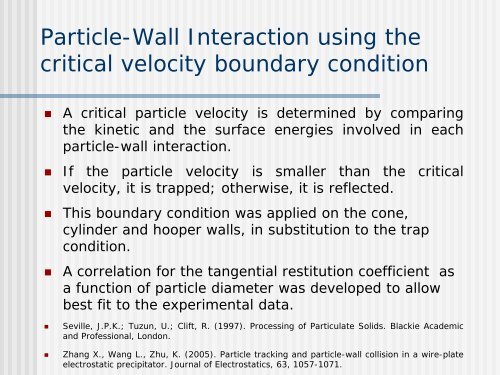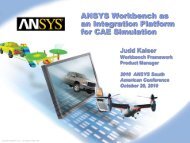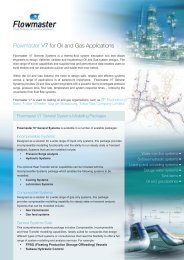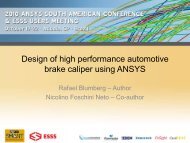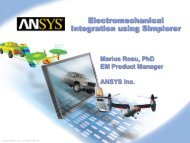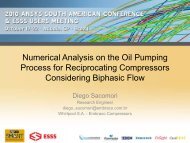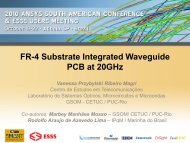Curso Limpeza de Gases - ESSS
Curso Limpeza de Gases - ESSS
Curso Limpeza de Gases - ESSS
You also want an ePaper? Increase the reach of your titles
YUMPU automatically turns print PDFs into web optimized ePapers that Google loves.
Particle-Wall Interaction using the<br />
critical velocity boundary condition<br />
• A critical particle velocity is <strong>de</strong>termined by comparing<br />
the kinetic and the surface energies involved in each<br />
particle-wall interaction.<br />
• If the particle velocity is smaller than the critical<br />
velocity, it is trapped; otherwise, it is reflected.<br />
• This boundary condition was applied on the cone,<br />
cylin<strong>de</strong>r and hooper walls, in substitution to the trap<br />
condition.<br />
• A correlation for the tangential restitution coefficient as<br />
a function of particle diameter was <strong>de</strong>veloped to allow<br />
best fit to the experimental data.<br />
• Seville, J.P.K.; Tuzun, U.; Clift, R. (1997). Processing of Particulate Solids. Blackie Aca<strong>de</strong>mic<br />
and Professional, London.<br />
• Zhang X., Wang L., Zhu, K. (2005). Particle tracking and particle-wall collision in a wire-plate<br />
electrostatic precipitator. Journal of Electrostatics, 63, 1057-1071.


